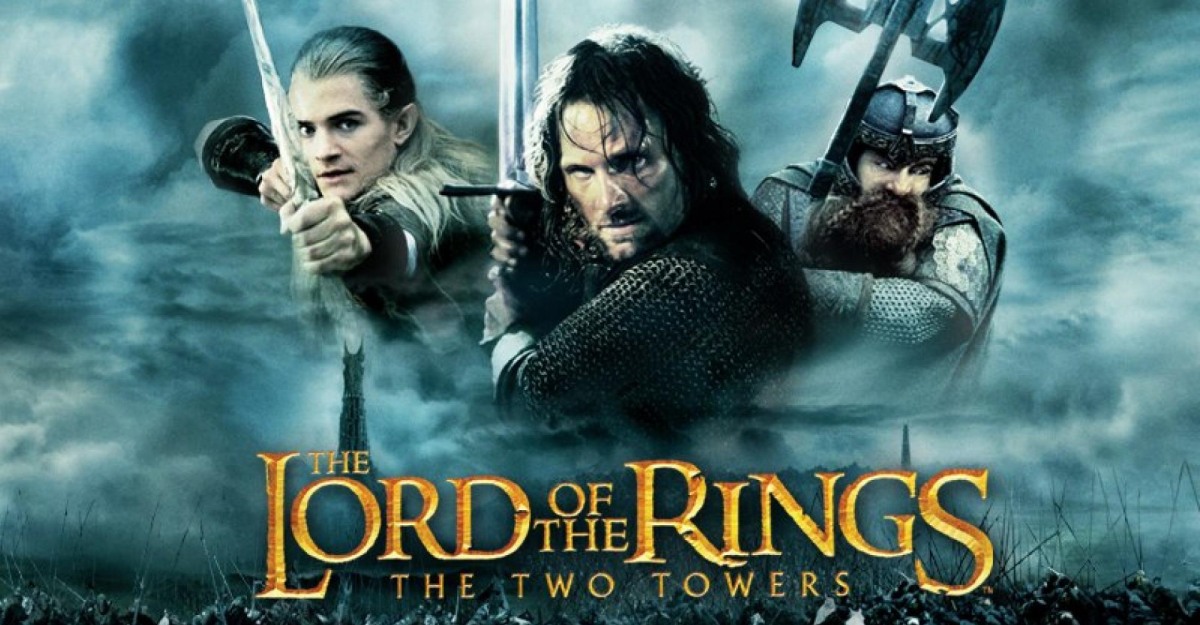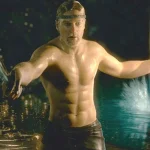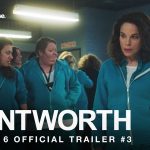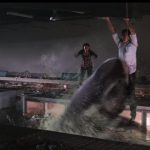The Lord of the Rings: The Two Towers (2002)

“The Lord of the Rings: The Two Towers” (2002) is the second installment in Peter Jackson’s epic film adaptation of J.R.R. Tolkien’s beloved fantasy trilogy, “The Lord of the Rings.” Following the success of “The Fellowship of the Ring” and preceding “The Return of the King,” this film continues the saga of Middle-earth with its grand scale, intricate storytelling, and groundbreaking visual effects. “The Two Towers” is celebrated for its rich narrative, compelling character development, and impressive cinematic achievements, solidifying its place as a cornerstone of modern fantasy cinema.
The film picks up the story following the dramatic events of the first installment, “The Fellowship of the Ring.” The narrative is divided into multiple storylines, reflecting the complex structure of Tolkien’s work. It follows the journeys of several key characters as they face new challenges and confront the growing threat of Sauron.
The film’s primary plot threads revolve around the continuing quest to destroy the One Ring and the rising conflict between the forces of good and evil. Frodo Baggins (Elijah Wood) and Samwise Gamgee (Sean Astin) continue their perilous journey towards Mount Doom in Mordor, where the Ring must be destroyed to prevent the Dark Lord Sauron from conquering Middle-earth. They are accompanied by Gollum (Andy Serkis), a tormented creature who once possessed the Ring and now serves as a guide, though his motives are ambiguous and his intentions uncertain.
Gollum is a standout character in “The Two Towers,” brought to life through groundbreaking motion capture technology and Andy Serkis’s remarkable performance. Gollum’s dual personality—the conflicted, pitiful Smeagol and the malevolent Gollum—adds depth and complexity to the narrative. His interactions with Frodo and Sam highlight the corrupting influence of the Ring and the moral ambiguity faced by the characters.

Meanwhile, the remaining members of the Fellowship are dispersed across Middle-earth. Aragorn (Viggo Mortensen), Legolas (Orlando Bloom), and Gimli (John Rhys-Davies) embark on a mission to rescue the kidnapped hobbits Merry (Dominic Monaghan) and Pippin (Billy Boyd). Their quest leads them to the realm of Rohan, a kingdom under siege by the forces of Saruman (Christopher Lee), the corrupted wizard and ally of Sauron. The storyline involving Rohan introduces the character of Éowyn (Miranda Otto), a strong-willed noblewoman who defies traditional gender roles and plays a crucial role in the defense of her homeland.
Rohan is depicted with stunning visual artistry, from the sweeping landscapes to the intricately designed sets. The film’s depiction of Helm’s Deep, the fortress where the climactic battle takes place, is a testament to Jackson’s ability to create grand, immersive environments. The battle at Helm’s Deep is one of the film’s most memorable sequences, showcasing a masterful blend of practical effects and CGI. The sequence is not only visually spectacular but also emotionally charged, highlighting themes of bravery, sacrifice, and unity.
The film also delves into the subplot involving the Ents, ancient tree-like beings led by Treebeard (voiced by John Le Mesurier). Merry and Pippin’s interaction with the Ents and their involvement in the battle against Saruman’s forces provide a unique perspective on the conflict and emphasize the environmental themes present in Tolkien’s work.
Peter Jackson’s direction is a crucial factor in the film’s success. His ability to balance epic action sequences with intimate character moments is remarkable. Jackson’s vision is supported by the work of cinematographer Andrew Lesnie, whose sweeping camera work captures the grandeur of Middle-earth’s landscapes and the intensity of the film’s battle scenes. The use of CGI and practical effects is seamlessly integrated, creating a visually stunning and immersive experience.
Howard Shore’s musical score enhances the film’s emotional and dramatic impact. The score combines themes from “The Fellowship of the Ring” with new compositions, creating a rich and evocative musical landscape that complements the film’s narrative and visual elements. The music adds depth to key scenes and underscores the epic nature of the story.

“The Two Towers” explores themes of friendship, honor, and the struggle between good and evil. The characters face moral dilemmas and personal challenges, reflecting the broader conflict in Middle-earth. The film’s portrayal of heroism and sacrifice resonates with audiences, and the development of the characters adds emotional weight to the narrative.

The film’s impact extends beyond its immediate box office success. It has been praised for its contribution to the fantasy genre and its influence on subsequent films and media. The innovative use of technology and storytelling techniques set a new standard for epic cinema and demonstrated the potential for adapting complex literary works to the screen.

In conclusion, “The Lord of the Rings: The Two Towers” (2002) is a cinematic masterpiece that continues the epic journey of Middle-earth with grandeur and emotional depth. Directed by Peter Jackson and based on J.R.R. Tolkien’s richly imagined world, the film is characterized by its compelling characters, breathtaking visuals, and masterful storytelling. The film’s exploration of themes such as courage, loyalty, and the fight against darkness resonates with audiences, solidifying its place as a landmark achievement in fantasy cinema. The enduring legacy of “The Two Towers” is a testament to its impact on both the genre and the art of filmmaking.











